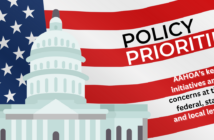by SEAN GROSSNICKLE
In January 2020, the White House announced the passage of the U.S.-Mexico-Canada Agreement (USMCA) and a preliminary trade deal with China, de-escalating long-standing tensions on two fronts of the administration’s trade wars. Both the USMCA and phase-one trade deal with China bring a degree of stability to what has been a tumultuous two years of trade negotiations between the U.S. and several other allies.
The USMCA revises the North American Free Trade Agreement (NAFTA), which President Trump had vowed to replace since the early days of his campaign. This new trilateral trade agreement updates and amends NAFTA to modernize various components of the deal, but the USMCA mirrors regulations of its predecessor. Essentially, both trade deals ensure tariff-free trade of goods and services between the U.S., Mexico, and Canada. A report published by the U.S. International Trade Commission (USITC) estimated that the USMCA would create 176,000 jobs and boost the GDP by $68.2 billion. Domestic manufacturing is slated to benefit the most out of any economic sector, and the service industry, notably travel services, is expected to experience the largest gains in output and employment.
A strong economy generally indicates promising growth for the tourism industry. If the estimates from the USITC ring true, then many Americans will generate disposable income and have more freedom to travel and vacation at destinations across the country. The U.S. Travel Association estimates that the USMCA will facilitate inbound tourism from Canada and Mexico, potentially generating $1.7 billion in visitor spending and creating 15,000 jobs.
The phase-one trade deal between the U.S. and China marks one of the more substantial de-escalations in the prolonged trade war. However, inbound tourism from China has diminished since the onset of the negotiations, dropping by 5.7 percent in 2018. The current agreement between China and the U.S. is more of a placeholder in the trade war; a comprehensive trade agreement would be needed to return inbound tourism to pre-trade war levels.
The Chinese government has demonstrated abundant willingness to leverage tourism policy in the ongoing trade talks. During the past three years, the Chinese government has issued stiff travel advisories, restrictive visa policies, and pushed skewed media coverage to discourage travel to the U.S. China represents the third-largest market for inbound tourism, and Chinese tourists, on average, spend more than visitors from other countries. A report published by Tourism Economics estimates that from 2018 through the end of 2020, the U.S. could expect to see nearly two million fewer Chinese tourists, which entails an opportunity cost of $11.1 billion in visitor spending.
Despite the freeze on tariffs brokered in the phase-one trade deal, hotel owners and developers are still subject to volatility when sourcing construction and furnishing materials from China. Project timelines are critical to the hotel industry pipeline, and the past two years of punitive tariffs engendered unease given the significant mark up on Chinese steel, aluminum, and furnished goods. According to a report conducted by STR, the average time to plan and construct a hotel in the U.S. in 2019 increased to 3.3 years compared to the long-run average of 2.8 years from 2010 to 2018. This trend is not solely attributed to the trade war, as a number of other factors can impact hotel construction. However, the rising costs of structural steel and aluminum, furniture, fixtures, and other equipment from China coupled with the increasing trend in construction time is cause for concern.




